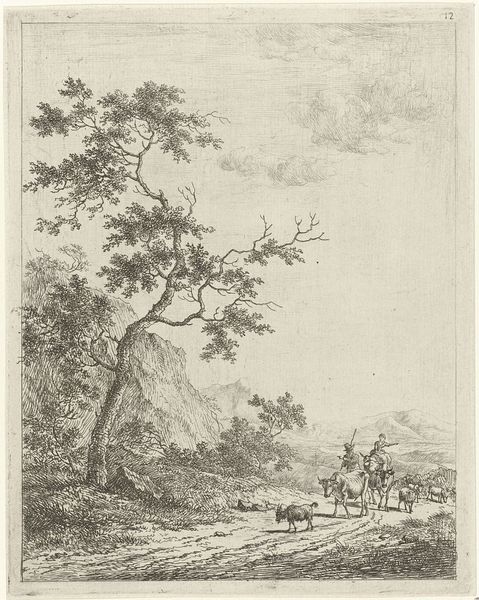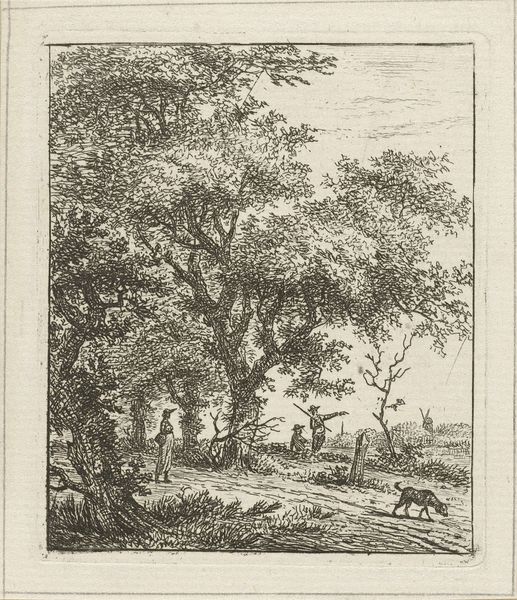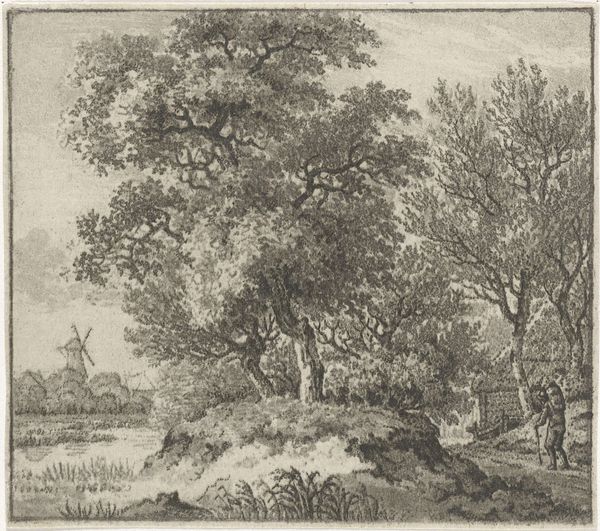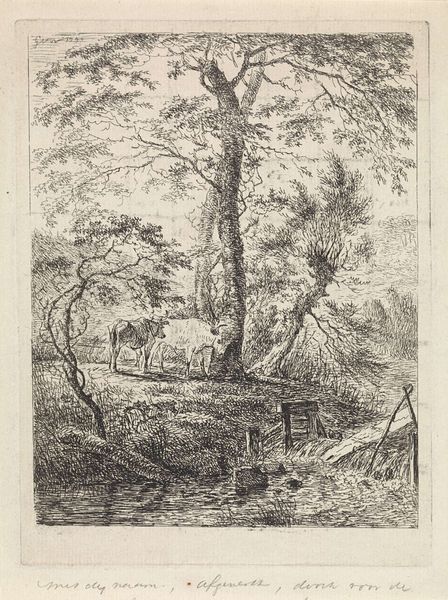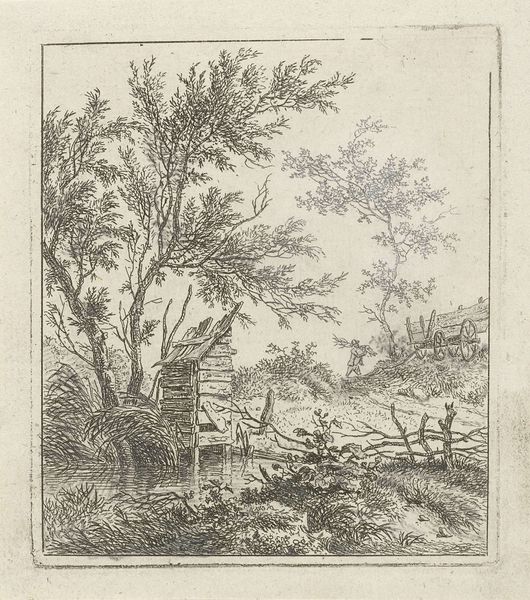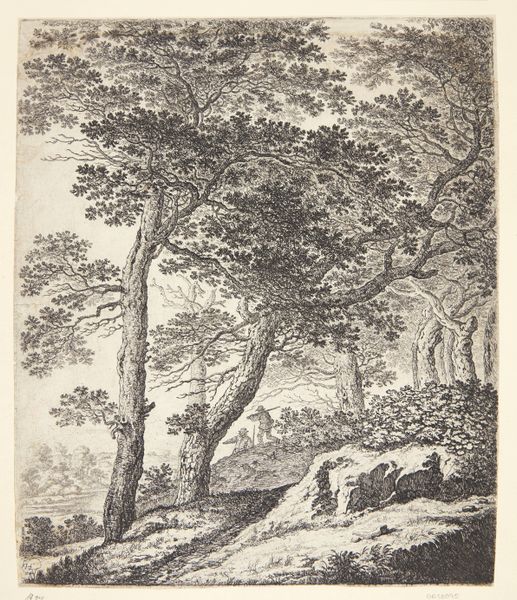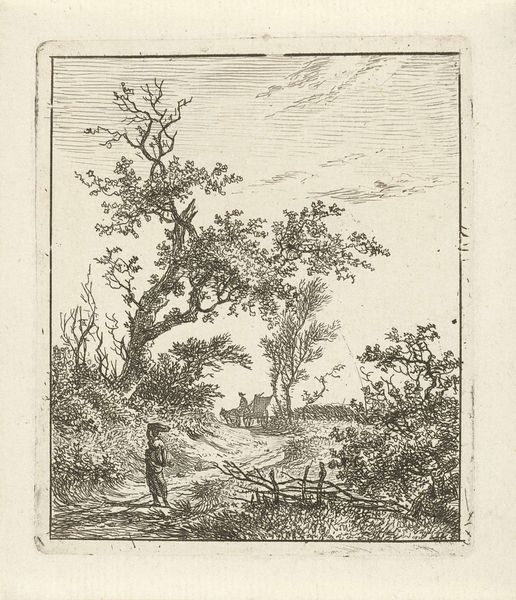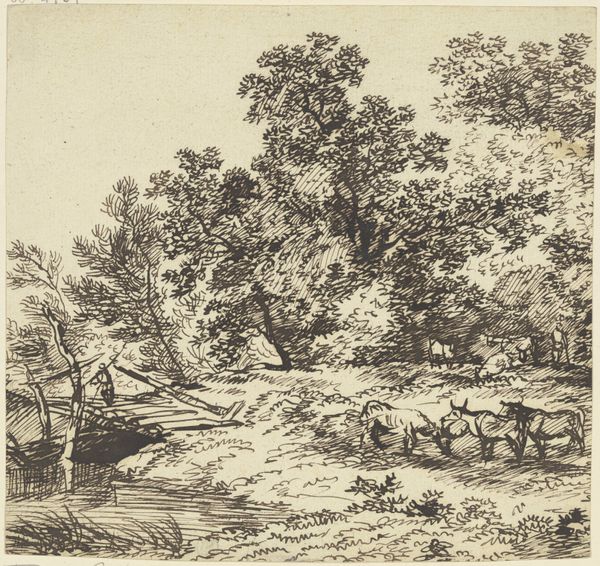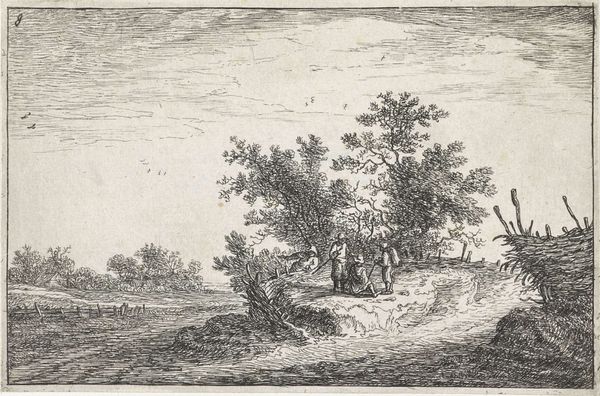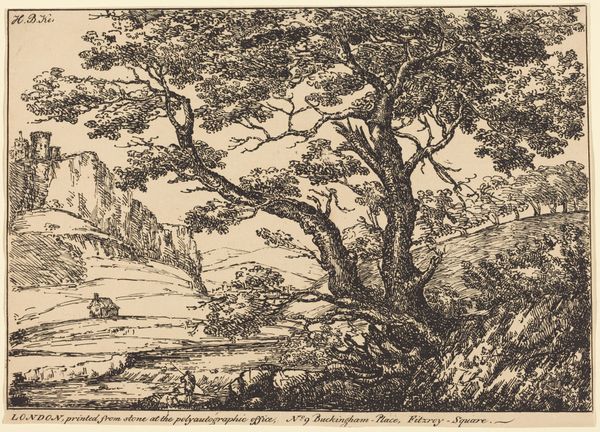
drawing, pencil, engraving
#
drawing
#
neoclacissism
#
pen sketch
#
pencil sketch
#
landscape
#
pen-ink sketch
#
pencil
#
pen work
#
engraving
Dimensions: height 102 mm, width 88 mm
Copyright: Rijks Museum: Open Domain
Editor: Here we have Hermanus Fock’s "Landschap met schaapsherder op heuvel," a drawing, engraving, and pencil work created sometime between 1781 and 1822. It gives off such a serene, pastoral vibe, despite being composed mostly of fine lines and simple shading. How do you read the composition of this landscape? Curator: Immediately, I'm drawn to the dominance of line. Notice how the artist meticulously employs line weight and density to create spatial depth, moving our eye from the foreground up through to the distant horizon. How would you characterize the types of line Fock employs here? Editor: Well, there's definitely a lot of very fine, almost scratchy lines to build up texture, especially in the foliage. Then, the outlines of the trees and the sheep are a bit bolder. It’s like he's building form with a series of carefully placed marks. Curator: Precisely. And consider the formal relationships created by these linear structures. See how the leaning tree in the foreground mirrors, in its diagonal orientation, the gentle slope of the hill behind it? The artist crafts visual harmony not through explicit detail, but through formal echoes and counterpoints. What impact do you think the restriction to monochrome has? Editor: It focuses attention on the forms themselves, stripped of any distractions from colour. I notice the different textures achieved are quite varied too, using hatching and cross-hatching, creating darker or lighter values. Curator: Yes, the restricted palette demands that the artist rely solely on tonal variation to suggest form, depth, and atmosphere. A crucial element of Neoclassical aesthetics lies within this. Editor: So, by focusing on the structure, Fock invites us to contemplate the balance and order within this landscape. I see now that even without the bright colors, there's such complexity just within the linework itself. Curator: Exactly. And hopefully a deeper appreciation of the formal decisions guiding its creation.
Comments
No comments
Be the first to comment and join the conversation on the ultimate creative platform.
